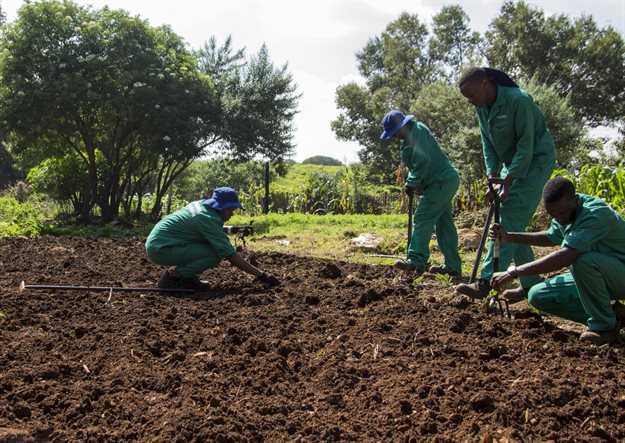
Top stories




Marketing & MediaCammy Msimango on finding her footing in South Africa’s fast-moving digital newsroom
Esther Tomorrow, MDNTV 1 day



Source numbers vary so it’s difficult to know exactly how many South Africans live with a daily food crisis, but the University of Johannesburg’s Centre for Social Change estimates as much as 34% of our population went to bed hungry during South Africa’s lockdown. It’s worth noting that Professor Kate Alexander, the author of the research, commented that the deputy director of the Department of Social Development told parliament that roughly 50% of the South African population is food insecure. This, together with the fact that the Department of Agriculture recently announced a R939m cut in its budget, leaves the most vulnerable facing an uncertain future.
Emergency food parcels, school feeding schemes and all the hard work done by corporates and NGOs are absolutely essential to keep our nation fed, but one of the key interventions and a long-term solution to the hunger and malnutrition faced by millions of South Africans is to develop a culture of sustainable food gardens in various sites such as schools, clinics, community sites, parks and households.

It may sound easy to recommend the often-quoted saying, and one full of social wisdom, ‘Give a man a fish, and you feed him for a day, teach a man to fish, and you feed him for a lifetime’, but food security is a complex challenge needing scalable environmental, social, and governance (ESG) solutions that take into account the water-energy-food nexus, effective planting and growing methods, financial investment, willing community involvement and, very importantly, appropriate training and mentorship. Only a well-balanced public-private approach that includes government at all levels, NGOs, civil society and communities will benefit hungry and malnourished people with limited access to the necessary resources, and because we’ve seen substantial cuts to South Africa’s agriculture budget, now more than ever, partnerships are needed.
Improving food availability can be achieved through capacitating small-scale farmers and gardeners and influencing city and settlement design to give people greater access to arable land, equipment and infrastructural resources, and assist with setting up small food enterprises in the community.

Firstly, as the African proverb says, "it takes a village", and in this case, community gardening is the best way to approach the project. It allows a group of people to plant a more diverse range of food in larger public spaces – think school grounds, clinic premises, unused sports facilities, city parks or church property. Community gardening benefits the entire community so access to these kinds of spaces should be easier to negotiate, especially if they are places where the community already gathers.
This approach to cooperative food growing provides learning opportunities for all involved about food gardening, food preparation, and more, while also offering economies of scale when it comes to the contribution of time, fertilising, water usage and the sharing of tools.
And don’t underestimate the benefit of sharing the fruits of the labour; all those who participate in the scheme get ongoing access to a good mix of seasonal fruit and vegetables by trading their contribution for food. And those who don’t participate can buy fresh produce at a better price than a retail outlet, with the proceeds being reinvested into the garden’s ongoing sustainability.
Of course, this only works if the community plan and manage the scheme effectively and efficiently, which includes creating working committees for planning and planting, human resources, financial and donor management, etc.

In communities where unemployment is rife – which is most communities – community gardening not only produces food, but also gives purpose and transforms problems into possibilities, which in turn improves mental health and well-being, which is sorely needed amongst the disenfranchised.
There’s a lot of talk globally about the benefits of backyard gardens for self-sustaining food security, but research shows that this is very difficult to implement in South Africa. The rest of the world is talking about growing food in every available inch of space, including on roofs and walls, but picture a tin shack … it’s just not possible.
South Africa needs to craft local solutions for its local circumstance which is why we strongly advocate for ESG-focused community initiatives. And with the active support and participation of multi-sector partners, we could be a little closer to solving our food security crisis.